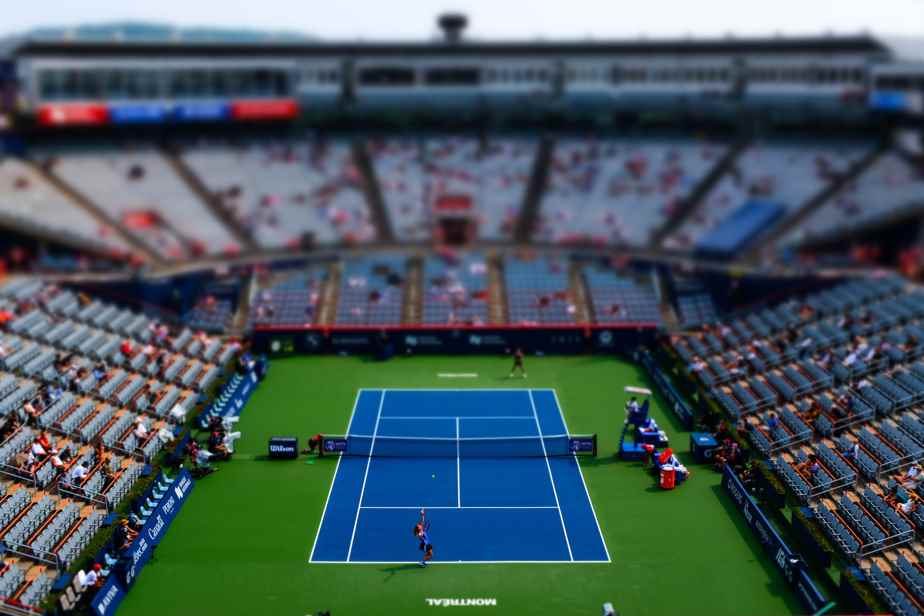The world of tennis has entered a new era. That of advanced statistics. Once absurd, but now necessary, it is the data that will form the greatest champions from now on.
Posted at 8:00 a.m.
Tennis is a sport of instinct, sensation and speed. All players agree. In the book Federer: the master of the gameby Christopher Clarey, the Swiss himself explains that what made the difference between the greatest players in history and the others was this ability to adapt in the middle of a match.
Now, there is an exception to the rule. As in the majority of disciplines, advanced statistics have invaded the way of directing, analyzing and preparing athletes. Much to the delight of progressives and the misfortune of purists.
Three or four years ago, when coaches started looking at advanced stats, they focused more on how to beat opponents. About 70% of the data collected was used more to find their weaknesses. Today, it’s much closer to 50%, says Robby Ménard, high performance tennis coach, advanced statistics specialist and analyst at RDS.
Another huge difference is that in the beginning, a player’s statistics were counted once a year, in November during the off-season. From now on, it is at each end of cycle and change of surface.
Advanced stats have truly taken the tennis world by storm since the pandemic ended. “It is now, it is there. Most teams use them,” says Robby Ménard, who has worked closely with some of the best players on the planet. Customer privacy notices make it impossible to reveal who it is.
Study the trends
The definition of the subject is earlier simple: advanced statistics are data that help players improve. However, putting them into practice is much more difficult than explaining them theoretically.
There are different ways to cite examples of data usage, because each move can be analyzed in many ways depending on the context of the match and the rally.
To simplify the explanation, Ménard presents a routine situation: “Let’s take for example the cross forehand. When I do two in a row, I win the point 60% of the time, which would be huge. Except that I realize that my opponent also has a very good forehand cross, given his ratio. So I better go on the reverse. It will come to influence the decisions according to my game, but also according to the opponent. »
The specialist notes that the best players in the world are two or even three moves ahead of their opponents, as in chess.
Beyond the probabilities of hitting certain shots, trends and behaviors are also studied. For example, on serve, the most important shot in the rally, the statistics usually compiled are aces, double faults, percentage of points won on first and second serve, and percentage of successful first serve. On the return, it is often a question of the points won in return and the number of break points.
With advanced statistics, the analysis goes further. When serving, it is possible to know where the server usually hits; in the center, in the body or out. Whether first or second serve. One can also compile trends on the second hit of the server. For example, what he usually does after his opponent returns an outgoing serve to him. Some players know that the match slipped through their fingers because they didn’t do enough serve and volleys, or because they didn’t serve enough to the body.
Advanced statistics have also greatly changed the position of players on return of serve. Previously, because second serves were less powerful than first serves, players tended to move closer to the baseline. Today, with the different tendencies, specialists have calculated that players have an advantage in stepping back and staying at a good distance in the baseline.
Favorite shots
The diagram may seem complex and it is for ordinary mortals. It can also be difficult for players to execute, as they are given a ton of information. This is why, to make the assimilation of data more digestible, the teams will usually present five main lines to follow to counter the adversary. Among them, three will predominate: the service, the return and the baseline.
Some followers of advanced statistics, like Novak Djokovic, who is a huge consumer of them, want them all. The more data he has, the better off he is. However, the players must also respect what Ménard calls their DNA.
“Some people ask me how Diego Schwartzman can still be on the circuit. That’s because Schwartzman has perhaps the best backhand diagonal in the world. It’s not fair that he delivers balls, it’s that he ends up driving you crazy with the consistency and quality of his cross backhand. »
Even if it remains a discipline that is played over fractions of a second, tennis is in the process of emancipating itself and advanced statistics appear as the new player who is shaking up trends. One that could serve as a model in a few years.

